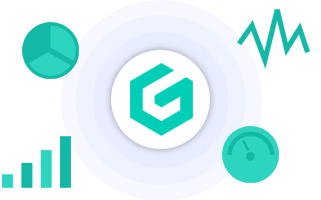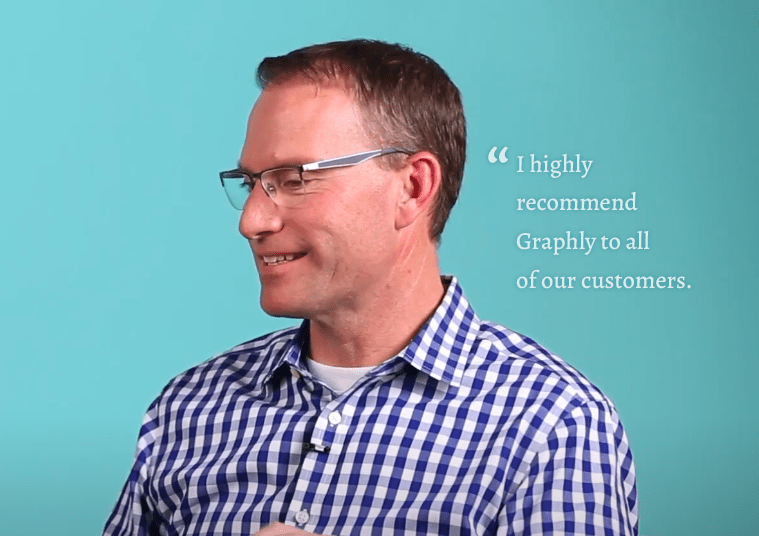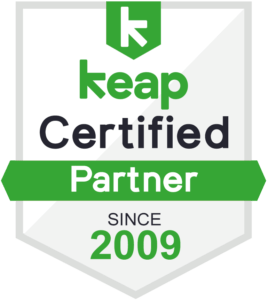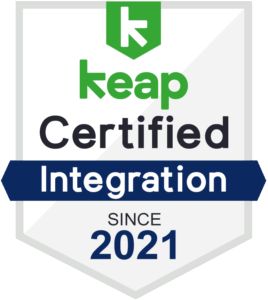I think I’m good on opportunity forecast education, just show me your new report
The Challenges
Probability
The first challenge we confront when heading down the path of opportunity forecasting is probability. Many sales organizations leave it up to individual sales reps to determine the probability on an opportunity-by-opportunity basis. Stop it. There’s no reason for this. Sales Operations or Sales Management can and should set default probabilities in the sales force automation settings for sales reps to see.
Another blunder related to probability (even for those who have established default probabilities), is evenly weighting opportunities. To put it frankly, all opportunities are not created equal. In other words, the likeliness or percent chance that an opportunity in the ‘New Lead’ stage will close is significantly lower than an opportunity that has progressed 4 stages in your pipeline and is currently in the ‘Closing’ stage.
If you’ve been giving opportunities across varying sales stages equal weight in forecasting the revenue those opportunities will bring your organization, you’ve been doing it wrong. Okay, maybe not wrong – that’s a little harsh, but we truly believe there’s a better way. But before we solve for probability let’s chat about another challenge that may be destroying the accuracy of your opportunity forecast.
Optimism
The second challenge we confront with opportunity forecasting is optimism. Optimism? Yes, optimism. Let me explain…
Optimism, belief, positivity, faith – whatever you want to call it, is usually a big part of a successful sales reps personality. It’s how they can hear ten, twenty, fifty or even a hundred ‘no’s’ and keep pushing forward until the next ‘Yes’. But when it comes to creating an accurate opportunity forecast, this optimism can come back to bite you in the end.
Sales reps believe in themselves, the product they’re selling, and the company they represent to such a degree that their perspective can somewhat be skewed as it relates to the likeliness or percent chance that a particular opportunity will close. This shows up most often in their ability to predict when a deal will close, something we refer to as a Commit.
The Solutions
Simple solutions exist when it comes to solving the two main challenges of opportunity forecasting.
Probability
The first is to create a standard for opportunity probability. If you’re using Graphly’s Opportunity Funnel report, you should be able to form a fairly accurate estimate of the percent chance of closing for opportunities in each sales stage. Use those percentages to adjust how much of the total deal revenue is included in the opportunity forecast.
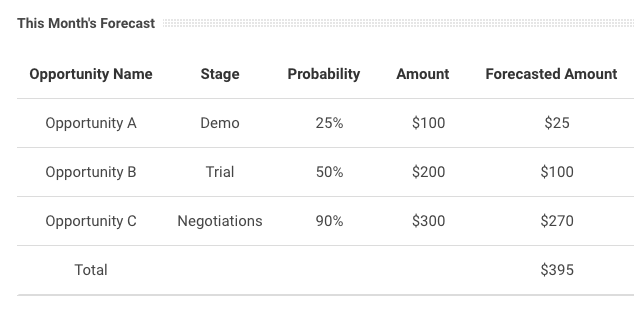
Pretty straight forward, right? In addition to the math being simple, another PRO to this approach is that it’s incredibly objective. Probability isn’t decided by opinion, but rather by historical results.
Optimism
Now, what about our second challenge, optimism? We love optimism…but we want it to be based in reality. The best way to do that is to define a clear standard for “Commits”. Here are a few questions you should be asking about existing opportunity records before checking the “Commit to Forecast” box:
- Does your prospect have the authority to make the purchase decision?
- If not, has your prospect already gotten sign-off from the person who does?
- Has the prospect confirmed a timeline for getting started?
- Does the prospect understand the purchase process?
- Does the prospect have a compelling reason to act now?
Ultimately, the key to more consistently hitting your commits as a sales organization is ensuring that your sales reps are doing the critical upfront discovery work to gain confidence that their prospects not only want to buy from them; they have the budget and the authority to make a buying decision, and have a compelling reason to close the deal within a specified timeframe. If all of these criteria are met, a “commit” is likely a safe bet.
Opportunity Forecast Report
More Thoughts On Forecasting
There’s no way to completely remove all human elements from opportunity forecasting. That’s okay, we don’t want to do that. The idea is that by combining the subjective input from sales reps with standardized probability and commit requirements, we’ll end up with an opportunity forecast that is more reliable.
Do You Know These People?
Here are some of the archetypes behind common opportunity forecasting errors at all levels of a sales organization:
- Rose-colored Glasses Glen is too optimistic about every opportunity he sees in his pipeline.
- Hard of Hearing Harry’s ears are too full of wax to hear that his prospect is really suspect.
- Sandy Sandbagger may be a pessimist, fear accountability, or just enjoys being the last-minute hero. She refuses to commit deals until quarter end.
- Peter P.O. Perfect is too much of a perfectionist to commit to any deal in the opportunity forecast until he has a purchase order in hand.
- Korner Kutter Keno forecasts deals, no matter what size, every time a prospect smiles at him. He can’t resist taking shortcuts and is too impatient to take prospects through every stage in the sales process.
- Fifty/Fifty Freddie won’t commit to a forecast, because he’s not sure which way his deal will go. A quarter in your pocket would give you a better forecast than he could!
Obviously we’re having a little fun here. But by recognizing these archetypes, you can hopefully address certain behaviors that are impacting members of your team and their input in the forecasting process.
From our experience, more seasoned sales reps tend to be more trustworthy in their opportunity forecasts; not because less seasoned sales reps are dishonest. The inexperience just seems to open the door for more speculation.
Measure. Tweak. Repeat.
Once you begin down the path of opportunity forecasting, you can easily check the opportunity forecast of your reps (and collective team) against their actual results. Like most marketing and sales processes, you won’t get it perfect right out of the gates. But with time, adherence to the numbers and a little coaching, you can build an accurate opportunity forecast that will serve your organization well.
Happy Charting!
Jarrod
P.S. If you missed last weeks release of Opportunity Funnels, make sure you check that out: https://web.graphly.io/opportunity-funnel/
